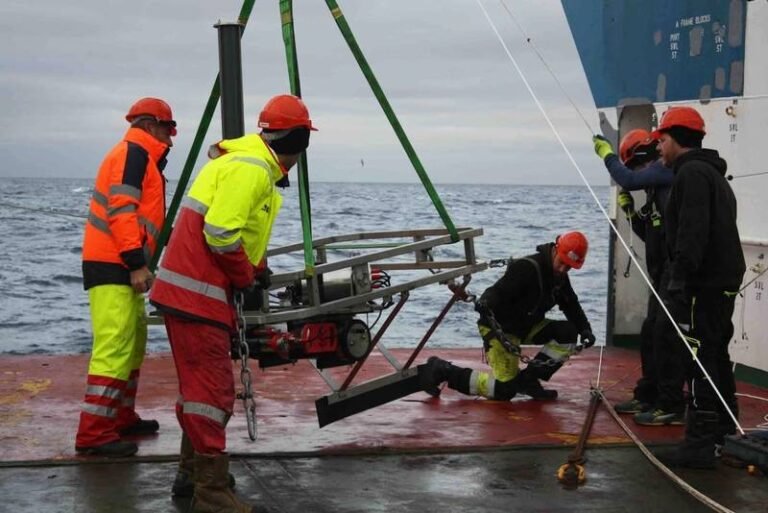Exploring the Depths of the Labrador Sea with Ocean Robots
A fleet of ocean robots and instruments has embarked on a groundbreaking exploration of the Labrador Sea, led by scientists from the UK’s National Oceanography Centre (NOC). The ReBELS project (Resolving Biological Carbon Export in the Labrador Sea) aims to unravel the mysteries of the biological carbon pump, a crucial ocean process that helps mitigate climate change by removing carbon dioxide from the atmosphere.
Unveiling the Biological Carbon Pump
The biological carbon pump is a key player in regulating Earth’s climate. Microscopic marine plants, known as phytoplankton, absorb carbon dioxide from the atmosphere and convert it into organic material. This material is then consumed by marine organisms, with remnants sinking as ‘marine snow’—carbon-rich particles that settle in the deep ocean, where carbon can be stored for centuries.
Dr. Filipa Carvalho, the project lead at NOC, emphasizes the vital role of the biological carbon pump in maintaining Earth’s climate balance.
Innovative Technology at Work
The ReBELS project utilizes a variety of cutting-edge technologies, including moored sensors, drifting profiling floats, autonomous underwater vehicles, and the innovative FluxCAM—a marine snow camera system designed to measure the sinking speeds of different-sized particles and reduce uncertainties in carbon absorption by the ocean.
Two FluxCAMs were deployed on a deep-sea mooring in the Labrador Sea, accompanied by specially programmed drifting profiling floats. Autonomous underwater gliders have now joined the mission, collecting data on ocean properties and carbon flux for an extended period.
Overcoming Challenges
One of the main challenges in studying carbon flux is understanding the rate at which sinking particles transport and transform carbon. The combination of fixed moored sensors, drifting instruments, and mobile gliders in the ReBELS project offers a comprehensive approach to tracking carbon movement in the Labrador Sea.
Dr. Louis Clement, co-investigator at NOC, highlights the significance of this multi-faceted approach in unraveling the complexities of the biological carbon pump.
Future Insights and Implications
Supported by funding from the Natural Environment Research Council (NERC), the ReBELS project is a four-year endeavor that builds upon decades of research into ocean carbon storage. By leveraging state-of-the-art robotic technology, the project aims to provide new insights into one of the ocean’s critical climate-regulating mechanisms.
Ultimately, the findings from the ReBELS project are expected to enhance our understanding of global climate change dynamics and improve our ability to predict and respond to environmental challenges.

